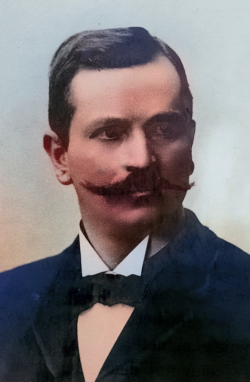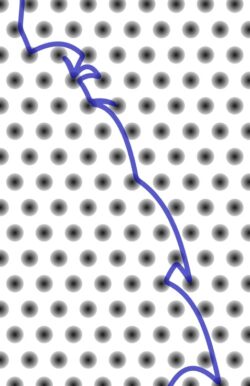Introduction
There is an excellent chance that you don’t understand how charges move in conductors or how energy moves in your circuit. Preconceptions you’ve held since high school and college might be affecting how you layout your printed circuit boards.
Don’t worry; you stand in good company with most electronic engineers – the preconceptions that lead to bad layout practices permeate the industry.
In the past several years, Rick Hartley, Eric Bogatin, Susie Webb, Daniel Beeker, Lee Ritchey, and other industry sages have revived a different model of energy movement. They try to get engineers to focus on what happens in conductors’ fields rather than the conductor’s body. But students don’t seem ready to learn the masters’ lessons. So, despite all of the lectures, the youtube videos, the presentations, why don’t engineers “get it?”
To understand how the energy flows around conductors, students need a different model of charge behavior in conductors. Once students understand the physics that describes a conductor’s field, they will hopefully understand what Hartley, Bogatin, Webb, Beeker, and Ritchey are saying and become better electronics engineers.
Each week for the next several months, our blog will go “Back-to-Basics” to electromagnetic fundamentals in a way that you might not have seen before or perhaps have forgotten since college physics. The framework and sample problems are available in the textbook “Matter and Interactions” by Bruce Sherwood and Ruth Chabay and “Teaching Introductory Physics” by Arnold Arons. Join us at https://teachmepcb.com to ask questions and better understand the topic or challenge the assertions presented here.
We will build ideas for most of the series – from electric charges to electric circuits. However, this week’s lesson is slightly different from the lessons that follow. This week, we will look at the discoveries of Ohm’s law and Joule’s power law from a historical perspective. In subsequent weeks, we will build the models needed from electrostatics to transmission-line physics.
This week, we’ll begin with what you probably know to be true about electronics.
The Free Electron Model
When you imagine how charges move in a conductor, the chances are that you’ve got one man to thank for it. Over 120 years ago, Paul Drude presented a model of charge movement in a conductor that is in widespread use today. That model has perpetuated into textbooks that have taught untold numbers of physics students through the decades.

Paul Drude from Wikipedia.com (colorized by Royal Circuits)
https://en.wikipedia.org/wiki/Paul_Drude#/media/File:Paul_Drude.jpg
Drude’s idea is also called the free-electron model (later the Drude-Lorentz and Drude-Sommerfield model.). Virtually every high school and college physics textbook teaches conduction based on this primitive model.
In Drude’s model of conduction, charges move through a conductor in the presence of an electric field, and the electrons scatter as they move from atom to atom, much like the balls in a pinball or Plinko machine. The scattering gives rise to resistance and explains Joule heating, and those are the first equations presented and taught when the textbook transitions to the subject of current electricity.

The image above shows the path a steel ball might take in a Plinko machine simulation as it falls under the influence of gravity. The ball’s path changes due to partially-elastic collisions with an orderly bed of nails.
Unfortunately, the model leads engineers to focus solely on the charge movement inside a conductor and not on the conductor’s surface or space around a conductor.
A cursory search of current physics textbooks on the shelves of the local used textbook store only produced a single undergraduate textbook that teaches electronic transport differently: “Matter and Interaction” by Chabay and Sherwood.
Drude Got it Wrong!
Drude created his model in 1900[1], just 3 years after J.J. Thomson discovered the electron[2]. For reference, Thompson proposed his “Plum Pudding” model of an atom in 1904 before Ernest Rutherford discovered that atoms had a nucleus in 1911[3]. James Chadwick didn’t discover Neutrons until 1932[4]. So while the model conforms to accepted physics models and can explain basic ideas such as incandescence, Ohm’s law, and Joule heating, the Drude model is incapable of explaining transmission line physics. Drude’s model is the one that you likely learned in school that influences your day-to-day thoughts of what happens in a conductor. In the weeks that follow, I’ll hopefully be able to to help you to view conductors a bit differently.
Author's Statement
I first took physics as a junior in high school from an excellent teacher. During my senior year, I served as a teaching assistant for that teacher. In junior college, I took two semesters of trigonometry-based physics (no calculus-based courses were available due to low enrollment) from an excellent teacher and had a phenomenal lab experience.
A year later, I transferred to a 4-year college when I took three semesters of calculus-based physics as my third exposure to the subject before I changed majors to Physics. I liked the subject and was pretty good at it, likely because it was my third exposure to the material.
My path was unique. Many electronics engineers take two-or-three courses of calculus-based physics in college and never touch the subject again. Those who are fortunate to have an opportunity to learn physics from a good teacher in high school enter college physics classes with a better ability to filter the signal from the noise. Unfortunately, the number of good physics teachers in high school is lower than it should be.
I spent 15 years teaching high school physics and half as many summers teaching Modeling Physics Workshops[1] for high school and college teachers. Nationally, there aren’t enough teachers with physics degrees available to teach physics, so many schools assign chemistry, math, or even business teachers to the subject.
Through a great many conversations, interactions, experiences, and readings, I have come to believe that electricity and magnetism is one of the least understood and most difficult subjects to teach. From conversations with teachers from California to the Carolinas, I have found that there is less lab equipment available, less instructor comfort with the subject, and less
time spent on the subject. Student comprehension suffers as a result.
If that first poor introduction to the subject is the only background a student takes into their college physics class, they’ll still have an advantage, but only a slight one.
Please remember that the blog articles that follow have the academic rigor of a blog, not a formal peer-reviewed academic paper. If you choose to quote this article in the future, please reference “this one guy on the internet” as the primary source.
[1] https://www.modelinginstruction.org/



